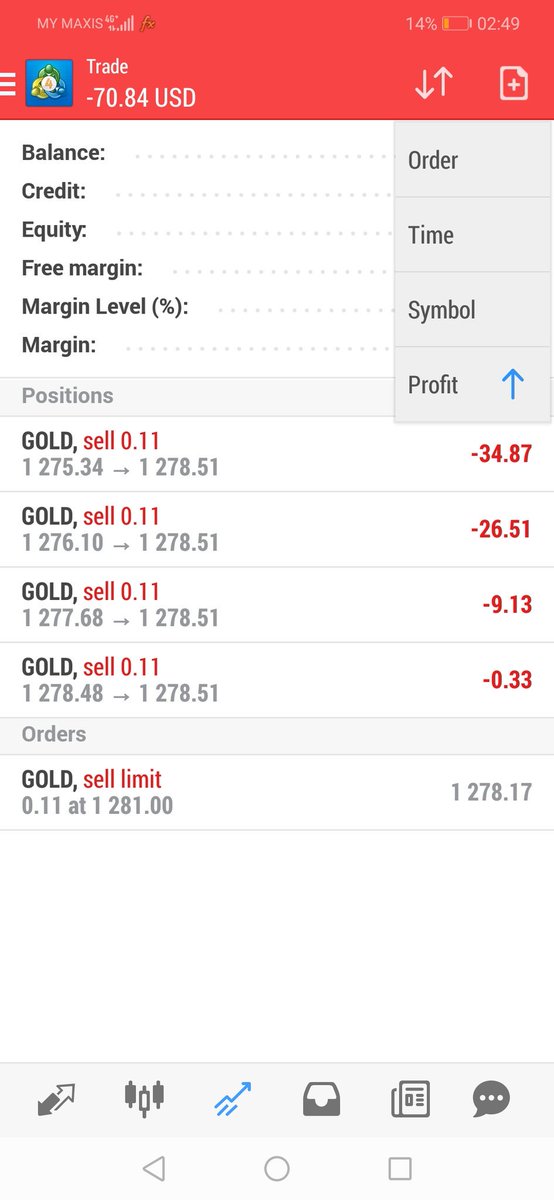The hedging activity from corporates hedging grade flows and institutional investors hedging equity or debt holding is held for long tenor ...
And one needs to have an ISDA and CSA agreement with the bilateral counterparty for the trade.
Also given the trade is gross (say 1 million USD for 72 million ₹upees)
For a Non Deliverable Forward - it’s cash settled.
If some one sold $1 million to buy ₹72 million a month forward.
On the final date if 1$ = 73₹ then the difference is the only payment made and it is in USD
So some one can sell USD to buy INR (typical carry trade as Indian interest rates are higher)
And buy USD sell CNY (say due to trade war pressures)
...
- NDF doesn’t need documentation (reason for trade or underlying asset to hedge)
- needs ISDA vs a clearing house and more international counter parties acces
- less margin requirements due to net settlement
- Cross margin with other currencies
1. Chinese Yuan CNY’ (or RenMinBi - literally peoples money) trading onshore - this has similar restrictions as Indian Rupee, and speculative element is curbed, foreigners can trade CNY for actual trade (imports/exports) hedging assets (debt/equity)
...
Mainly favored by speculative traders, who bet on the fixing set by PBOC (which is used to guide direction of the market)
Also Chinese Banks are active in the market in HK
This is a currency which is freely trading in HK without capital controls and if one has proper documents then 1 CNH can be remitted for 1CNY.
Though there remains significant differences in spot and forward rates as arbitrage isn’t easy
Thus link between onshore and offshore is maintained. And the Central Bank (PBOC) has a good control on the currency - at the same time due to speculators presence the market has enough liquidity...
This isn’t doable given the indian banks don’t have capacity to handle large flows and have bad balance sheet not allowing mtm volatility
Here FPIs own 40% of domestic debt and hence many are hedging the requirements in NDF offshore.
Also it exports coal and imports manufactured goods.
They have a Domestic NDF (DNDF) contract onshore - which removes issues of Gross margin and settlement risk
Also with Indonesian banks trading Indonesian Rupiah NDF and DNDF both - there is a connect between forwards and it’s better linked.
Indian parallel to DNDF is FX futures on NSE
At the same time allow foreigners to trade FX futures with limited documentation (right now it’s capped at $100 mln)
Here the banks onshore itself can quote NDF sitting in Seoul to overseas clients.
Banks can maintain a Onshore ‘deliverable fx forwards’ and a Offshore NDF book.
This is the best solution - while speculators might face an overseas entity of a foreign bank
This ensures all KRW risk is reflected in books onshore. Bulk of offshore market is covered by foreign banks. But they in turn hedge with local banks
But in this case too, the NDF market will remain offshore.
This has seen a lot of domestic rich guys move money out and foreigners flood in and out.
Makes currency too volatile for any local business to plan
For a non mature economy - fully open current account can be risky and too painful.
No business can invest long term if currency can fluctuate wildly.
Thus both are stuck in middle income traps.
Rich locals all move money outside
- India can learn from Indonesia and open up FX futures market (and clear up taxation laws for FPI or NRI)
- India can learn from Korea and allow foreign banks and Indian banks to quote NDF from onshore.
Keep proper risk management and record keeping
And India isn’t mature enough to open up its capital account














